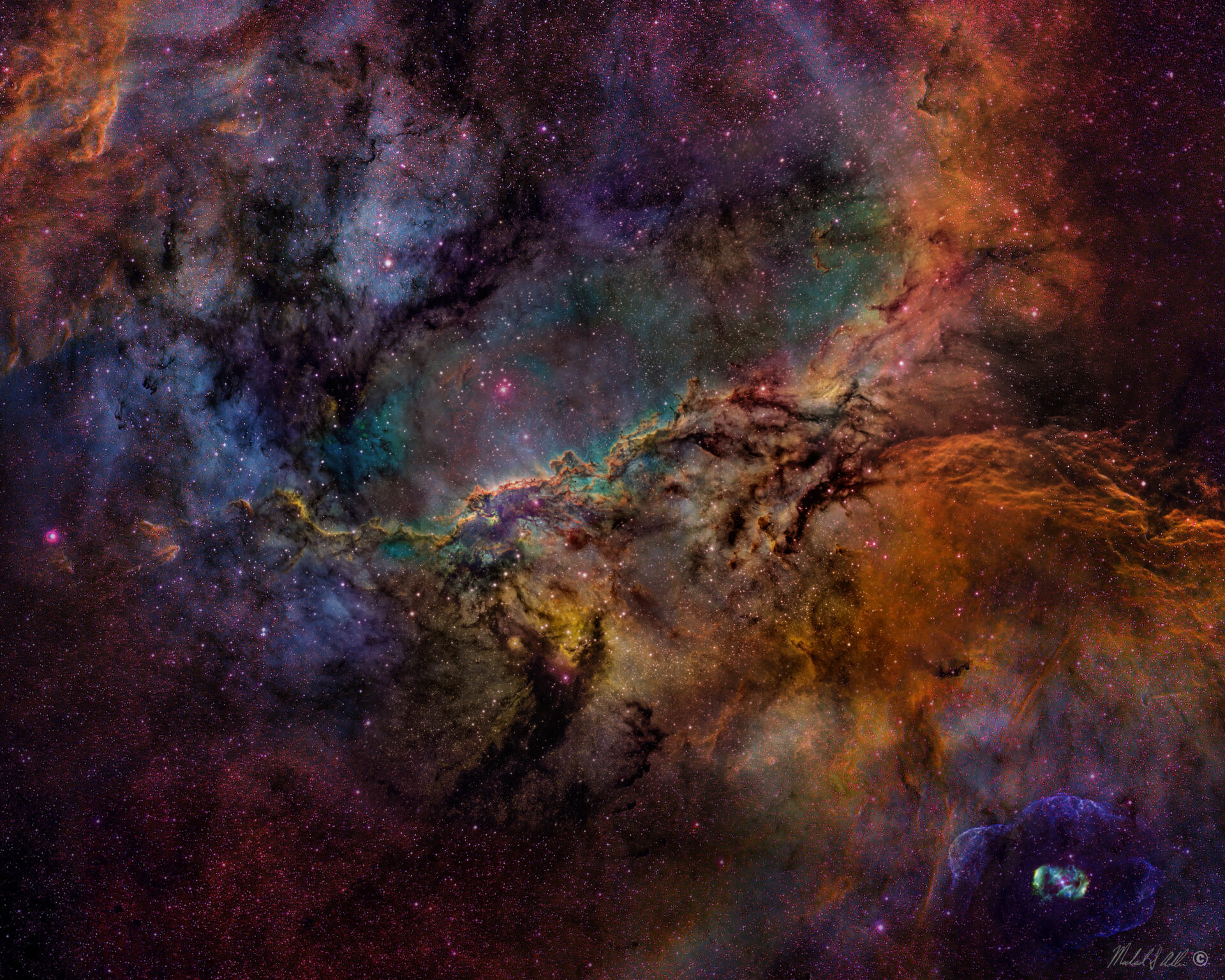Optics:Tahahashi FSQ106, Astro Physics RH305, Planewave CDK17
Mount: Software Bisque Paramount ME
Camera: Various
Filters: Astrodon 3nm Sii,Ha,Oiii
Dates/Times: Various
Location: Rio Hurtado, Chile, Heavens Mirror New South Wales, Australia
Exposure Details: SHO Image, total 285 images taken over 133 hours
Acquisition: MaxIm DL
Processing: MaxIm DL, StarNet++ used to remove stars in color SHO images, Photoshop CC2020 used to create Synthetic Luminance and to add color with color blending mode. FSQ 106 and RH305 images upscaled to match scale of CDK17. One FSQ image, two RH305 images and four CDK17 images made into a composite
NGC 6188, Dragons of Ara and Surroundings
Original price was: $65.00.$52.50Current price is: $52.50.
Dragons of Ara and surroundings, NGC 6188 This image shows dark and light shapes of fighting dragons winging their way through dusty clouds of light emitting gas and dust. The emission nebula is found near the edge of an otherwise dark and large molecular cloud in the southern, constellation Ara, about 4,000 light-years away. Born in that region only a few million years ago, the massive young stars of the embedded reddish Ara OB1 star cluster(just left and above the image center)sculpt the fantastic shapes and power the nebular glow with stellar winds and intense ultraviolet radiation. The recent star formation itself was likely triggered by winds and supernova explosions, from previous generations of massive stars, that swept up and compressed the molecular gas. The image is a composite of seven images. The overall image was captured with a Takahashi FSQ106 but detail was enhanced with two images from an Astro Physics RH305 and four images from the 17″ Planewave CDK17 Mainly concentrated near the “dragons”.The scale of the image is close to the scale of the CDK17 and gives the center of the image great detail. The image size is over 14100 x 11200 pixels or about 160 mega pixels. The field of view spans about 5 full Moons, corresponding to about 170 light years at the estimated distance of NGC 6188. The dramatic false color image in the Hubble palette highlights the emission of hydrogen, sulfur, and oxygen gases energized by intense ultraviolet radiation from the nearby stars. Green in the image comes from Hydrogen gas emission, red from Sulfur and blue from Oxygen. Each of the separate images were done by making a synthetic luminance from the narrowband images from each camera and then blending in the color in Photoshop CC2021. The images from the smaller FSQ106 and RH305 telescopes were scaled to that of the CDK17 and then the six images were merged to create the final detailed image. If you are wondering what the object at the lower right is, it is NGC 6164. It looks like a planetary nebula which is the remnant of a Sun like star after all of its nuclear reactions ended. However, it is not a planetary nebula but the result of previous activity of the massive O type star in its center. The outer extent of the scalloped remnant cloud is 100 light years in size which is huge compared to the size of our existing solar system. It is over 160,000 times the distance to Pluto. One of the CDK17 images added detail here.


